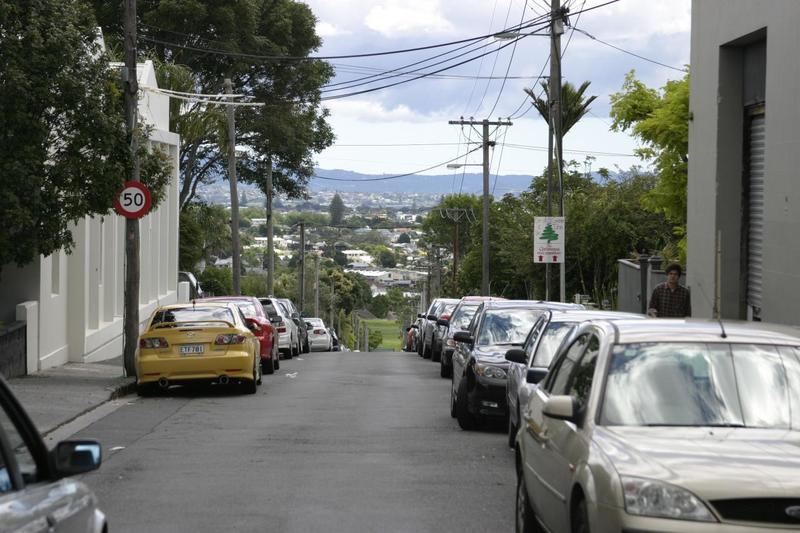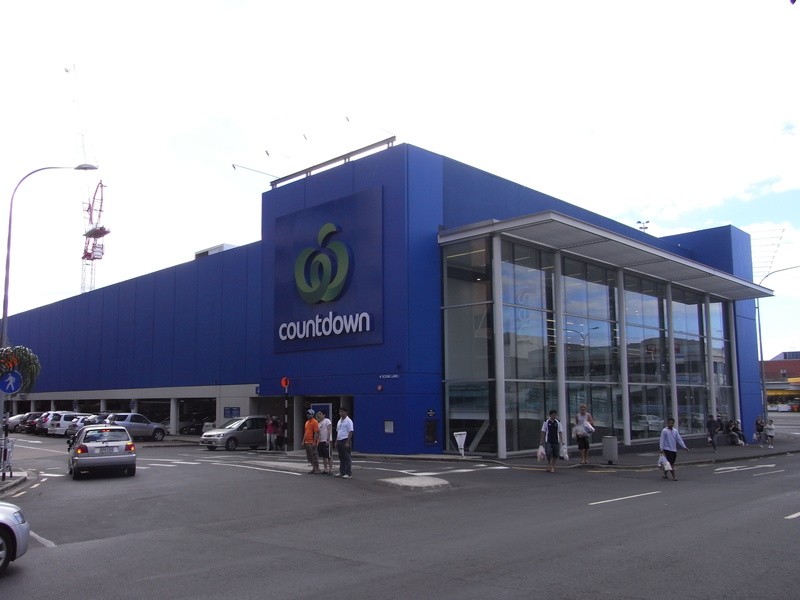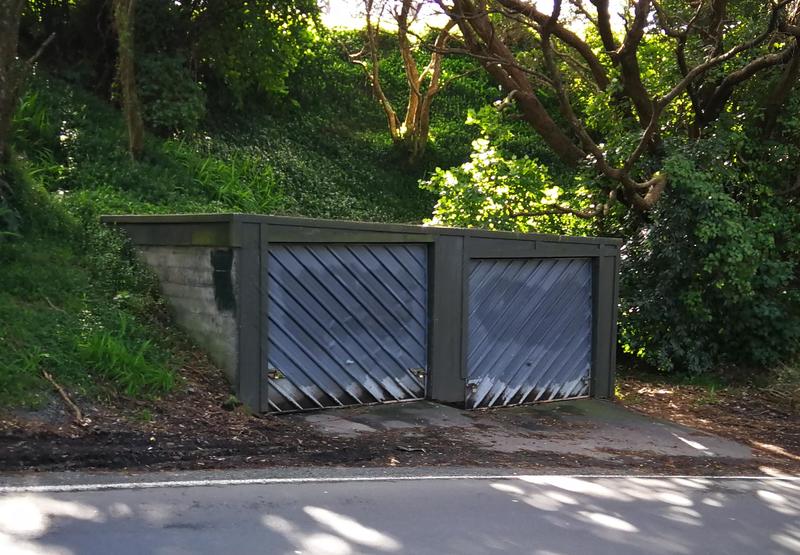This article has also been cross-posted at Greater Auckland and you can comment there.
Last year I wrote about why parking minimums are bad policy, and how easy it might be to end them. The excellent urban activist group Greater Auckland reposted it, and there were some interesting points raised in the comments section. I also looked at the very different approach to parking taken in Japan, where parking is seen as an individual responsibility of the driver, and met through paying for unbundled parking at market rates.
This time, I want to look ahead and think past abolishing parking minimums to see what might happen to our cities here in New Zealand once parking minimums are gone everywhere.
The Short Term
What won’t change
On our first day without parking minimums, practically nothing will change. The number and position of carparking spaces will be what it was the day before. The number of cars will be pretty much the same. The trips people take will be the same. The appeal of alternatives to driving - cycling, walking, public transport, home delivery - will be the same. So it’s likely that businesses with free parking will keep offering it, paid parking lots will maintain their prices, and on-street parking will face about the same level of demand. So people will drive about as much as they did the day before, and park about as much, and pay about as much.
Urban development is not exactly a fast-paced business. “Rome wasn’t built in a day” is our go-to cliché for needing to have patience, after all. For a year or more, the developments actually being built will still have been designed and funded on the assumption of parking being required. Some developments may go back to the drawing board, but they’ll take longer. It will take some time before new buildings are built without parking.
It’s also worth noting that abolishing parking minimums will not automatically mean that buildings are built without parking. As long as driving remains dominant, parking is necessary. On-site parking will be more convenient, and a marketing advantage. How long that will stay true depends on how we respond to the new world.
Reduce, Reuse, Recycle
But the parking that existing buildings have is immediately up for grabs. Plenty of buildings will have resource consents that require a certain number spaces to be set aside for visitors, staff, or the like, but don’t actually use that many spaces regularly. They’ll have spare parking from day one, and start looking around for other ways to use it.
One obvious alternative use for an empty parking space is… parking cars. Just because one business has a surplus of spaces, doesn’t mean that its neighbours do. Renting out your surplus spaces or simply selling them is a quick way to get a return. In places that are still car-oriented, but with large stocks of existing off-street parking in excess of what regularly gets used, this will probably kill the construction of new parking spaces immediately, as renting or buying existing parks will be cheaper.
In places where even right now there genuinely is just too much parking, even for free, parking spaces can be reused relatively quickly for storage, for pop-up shops, food trucks, or other uses, and this is something that’s pretty common now in those New Zealand CBDs that already don’t have parking minimums.
 ReStart mall in Christchurch. Shipping container malls are a quick way to make a commercial return somewhere with surplus paved space and demand for retail or hospitality. Photo credit: amanderson2 on Wikimedia
ReStart mall in Christchurch. Shipping container malls are a quick way to make a commercial return somewhere with surplus paved space and demand for retail or hospitality. Photo credit: amanderson2 on Wikimedia
In residential areas, garages and driveways will be up for grabs. Where there’s ample on-street parking, but rents are high enough to justify it, people will convert garages to extra rooms (as they already do illegally).
At this point, the amount of driving we do will probably be unaffected, and the direct price of parking to drivers won’t be changed. Where parking was required to be provided under old resource consents, those costs were passed on in the form of higher rents - they still will be.
The situation on the street
The original motivation for parking minimums was to address the problems with on-street parking. Too many cars cruising for spaces that aren’t there adds to traffic congestion, pollution, and wastes a lot of time. It can encourage people to park illegally on grass verges, fire hydrants, footpaths, and so on. It also doesn’t work: ultimately, if there are more cars than spaces, some people won’t get a park, and they won’t be able to make whatever trip they came to do.
So if we don’t have parking minimums, what happens on the street? The answer is pretty simple: whatever happens right now. Parking minimums haven’t completely killed off the demand for street parking, which is still usually cheaper and often more convenient than off-street parking. City councils deal with this by limiting demand: time limits, increasing the price of parking meters, adding new meters where they didn’t exist before, and setting aside dedicated spaces for disabled people, vehicles making deliveries, and taxis1. In general, in commercial areas, it seems likely councils will settle on prioritising short-stay parking, deliveries, pick-up and drop-off, and installing parking meters for the remaining spaces. The prices will probably end up roughly in equilibrium with nearby commercial off-street parking.
The other possible response, which is far from inevitable but I think would be good, would be repurposing a lot of that on-street parking as well. Most cities have dismal provision for cycling, and a lot more cycle lanes could be built by removing a bit of on-street parking. Other reuses for on-street parking include:
- bicycle and scooter parking, including dedicated spaces for dockless cycle and scooter share systems to keep them off the footpaths.
- outdoor seating, street trees, and parklets.
- wider footpaths, which often would simply be undoing older narrowings of those same footpaths.
- bus lanes and light rail tracks.
In more suburban areas, often there’s ample on-street parking space. In which case, nothing need immediately change: we have those spaces, we might as well use them.
The in-between level is interesting. It’s likely many inner suburbs that currently have no restrictions will gain residential parking schemes or pricing for the first time. That’ll be politically interesting, but it’s likely inevitable anyway. There’s plenty of streets in Auckland, for example, built with one or two off-street spaces per house, but now occupied by flats with four, five or six cars between the tenants. Parking minimums or no, city councils will still need to do something to address the issue through managing on-street parking.
 One way or another, big cities will end up with cars parked wherever they are allowed, if parking is free or unmanaged. Photo credit: Brad Fults on Flickr
One way or another, big cities will end up with cars parked wherever they are allowed, if parking is free or unmanaged. Photo credit: Brad Fults on Flickr
The Medium Term
Putting a price on parking
But reducing parking minimums is not just about making more efficient use of the parking we already have. Once parking competes for land space with other uses of land, sooner or later, private parking that doesn’t make a financial return will be replaced with something that does. In denser city centre areas, this will happen immediately. In suburban areas where everyone has a surplus of on-site parking already, it may take considerable time and redevelopment (which we’ll see in “Changing The Shape Of Our Cities”, below). But it will happen2.
Making a return on parking doesn’t necessarily mean putting up parking meters. There are New World and Countdown supermarkets in the Wellington and Auckland CBDs, built after the abolition of parking minimums in the particular areas they sit in, and they provide free customer parking now. They’re working on the assumption that most of their customers will still drive. They’re paying for parking either way: but bundling the cost of the parking into the goods in the supermarket is less hassle than establishing a paid parking system, which customers are often averse to.
Those supermarkets exist in an environment where the other parking around them is expensive, and so they have to pay for their own parking enforcement, checking that only customers park in the spaces they provide. Other businesses in that situation choose to monetise this. The Westfield 277 mall in Newmarket (now closed for refurbishment) offered free parking for customers, but also paid parking for non-customers. Either way, you’d take a ticket on the way in. To leave again, you’d need to validate the ticket. Customers would have the ticket “validated” when they made a purchase, non-customers would need to pay at a machine.
I think for retail, especially outside of city centres or transit hubs, this model will probably continue for big retailers even when it’s not required. Large-format retail is generally set up as a driving experience, most customers will still drive, and convenient “free” parking will still have marketing appeal.
But once parking minimums are optional, other options open up. Both Countdown and New World also offer “metro” stores in the CBDs, without parking. The prices are the same, generally, but the stores are in a better location. Other supermarkets also exist - particularly Asian supermarkets and specialist fruit and vegetable shops, and they compete on price. Customers have options.
 Countdown Quay Street, in central Auckland. The developer was not required to provide customer parking when it was built, but chose to anyway. Photo credit: Richard001 on Wikimedia
Countdown Quay Street, in central Auckland. The developer was not required to provide customer parking when it was built, but chose to anyway. Photo credit: Richard001 on Wikimedia
Unbundling parking
The experience in the CBDs with no parking minimums is that aside from some retail, parking has generally just become “unbundled”. Apartments have residents’ parking as an optional extra. Office workers increasingly pay cash for spaces at work, or simply lease them from commercial parking buildings.
This unbundling of the cost of parking isn’t necessarily key to the longer-term benefits of abolishing parking minimums, but it is likely, and it is a good sign.
For drivers, this all probably sounds pretty off-putting - the experience of constantly paying for things that you currently do not need to pay for. It’s worth remembering that, actually, you do already pay. All the free parking at shops, homes, or workplaces still costs money, and it’s still you who pays. The cost is just hidden in higher prices, higher rents, and lower wages.
You’ll often also be able to avoid paying these costs in future, which you can’t at the moment. You can avoid them by not driving - which brings us to:
Reaping the rewards
Driving has costs and benefits. The benefits flow entirely to the person doing the driving, in getting to their destination further (or getting to their destination at all, if it’s far enough away and there’s no alternative method). The costs are spread fairly widely. In non-monetary ways, there are costs from the impact on the environment, the injury and death from collisions, and the wasteful use of scarce urban land.
The costs are large in a lot of monetary ways, as well: the cost of building and maintaining roads is vastly higher if the roads have to handle car traffic rather than pedestrians. Traffic cops need to be paid, ACC needs to be funded, cars need to be inspected to make sure they’re safe. Most of those costs we attempt to pass on to the drivers themselves. They are the ones who reap the benefits, they are the ones who should pay the costs - it’s only fair.
But it’s also expensive directly. As well as paying the taxes to cover the costs above (and even then those taxes only cover part of those costs), cars cost thousands of dollars every year in depreciation, insurance, and servicing, before they’ve travelled a single metre. Then you’ve got to fuel them.
Unbundled parking is just another step in our attempts to put the cost of driving on drivers, in proportion to how much of that cost they cause, rather than onto the general public equally. But all this mounts up to a pretty amazingly big bill, to run a car.
But that means it also adds up to a pretty big saving you can make, by owning one car instead of two, or zero cars instead of one. Even just reducing the amount of driving you do will provide savings from not parking it as often.
But reducing the driving you do relies on having some alternatives to driving.
Central and local government have spent decades talking about encouraging alternatives to driving. Cycling and walking are (obviously) already cheaper to users than driving. People avoid cycling because they perceive it to be dangerous. People avoid walking because most of our urban areas make walking unpleasant, and because all of the space used for cars means our cities are just too spread spread out, and most destinations end up farther than a practical walking distance. In Auckland, often beyond cycling distance too.
Public transport, though, often isn’t cheaper than driving. With driving being relatively more expensive, by paying for parking, public transport becomes more attractive by contrast. This will get more people on public transport, which will bring in more money (and more political will) to fund improvements to public transport, in a virtuous cycle of improvements.
Part of the problem with public transport is the high fixed costs. With higher ridership, public transport services can end up with better quality services, lower fares, and lower government subsidies - simply because the costs are spread over more people.
But the big wins won’t come from just changes in the relative price of alternatives. If there’s nowhere to walk, people won’t walk no matter how much it saves. If the bus takes three hours versus half an hour driving, people will still pay a fortune to drive.
The true benefits of removing parking minimums will come much further in the future, when we build vastly less parking - because we simply don’t need nearly as much parking.
 Owners of existing carparks may find it more lucrative to rent them out or convert them to other uses. Photo: Author
Owners of existing carparks may find it more lucrative to rent them out or convert them to other uses. Photo: Author
The Long Term
I’m pretty confident about the short and medium term. We’ve had experience with removing parking minimums in some small ways in New Zealand already, and this serves as a good guide. Wellington almost completely abolished minimums for commercial uses in 2000. Auckland has attempted to abolish most commercial minimums in town centres, and in higher-density residential zones, although there is still court action over this change. Those two cities and many others, including Christchurch, Tauranga, and Queenstown, have all abolished parking requirements completely in their city centres. There’s also plenty of overseas jurisdictions to look at that have abandoned or never had parking minimums.
The benefits even in the short term make abolition worthwhile. Even if the amount of driving doesn’t reduce, eliminating parking minimums will still lead to more efficient use of urban space, and a fairer distribution of costs.
The long term effects of getting rid of parking minimums are harder to predict, although it has potentially even greater benefits. So what follows is what I want to happen, which is also what I think will happen. It will depend on other policies as well, not just the abolition of parking minimums.
Before we look at the future, though, let’s look at the past.
We changed the shape of our cities
Our cities were not always built around the car. In was a process that started in the 1920s and 30s, when cars rapidly went from being a niche hobby for eccentrics to being de rigueur for the upper middle class. It became quickly apparent that there was not enough room on existing city streets for cars, and traffic congestion undid the benefits that cars might have for their users. People genuinely thought motoring, and only motoring, was the future. There was no talk, then, of a “balanced” transport policy, or that driving was “revealed preference”. Driving was something to be encouraged, whether individuals liked it or not.
New Zealand for the next half-century or so followed the model the United States was setting: remake cities to make cars useful. Streets were widened, parking garages were built, and parking minimums were first introduced. Cities expanded outward, and the new suburban areas were built from scratch for the car. At their worst, they had street networks designed to make buses and trams impossible, no footpaths at all, and high-speed roads with no separation for cyclists. Parking minimums were a crucial part of this: if everyone must drive, everyone must park, so there must be enough parking. All that parking, in turn, just made it harder to walk, by spreading destinations out further.
 If your city looks like this, most people will still drive, even if they have to pay a bit for parking. Photo credit: Auckland Council.
If your city looks like this, most people will still drive, even if they have to pay a bit for parking. Photo credit: Auckland Council.
I would describe this entire process as a mistake, and I think many of the people reading this would agree. But there are still people now who think that we were right to encourage driving, and only driving. That walking or trains are old-fashioned3. I don’t have much to say to them: they’re a small minority we will probably not convince.
But I think the more popular view, particularly among policymakers of the last few decades, simply is a muddled view of the history, or a lack of understanding that the utility of cars comes from a city specifically designed to make cars useful. The idea that almost everybody drives for almost every trip is seen as an unstoppable force of nature. “Aucklanders love their cars” was a popular refrain of the 1990s. Driving has not been deliberately designed: it has won some sort of pure free-market competition4 for hearts and minds, and the government has no choice but to reluctantly go along with it.
It’s for these people that I think ending parking minimums will be an eye-opener.
We can change the shape of our cities again
Building our cities around cars took decades. Undoing it, and building our cities around people, will also take decades. But I don’t think it will be necessarily as hard to undo as it was to do. Doing it required massive state expenditure and coordinated political will.
Cars are not just a negative imposition on non-drivers in cities, but I think they’re actually not very practical for drivers, either. Making driving practical requires vast expense, but also requires cities to be designed in a particular form where only driving is practical. The problem with cars is space, and in cities, space is scarce. But we don’t see that tradeoff when parking is free: we see parking itself as a scarce resource that needs protecting. Once parking has a price, we see more clearly that parking is not just a thing of value, but also a burden.
Cars, if they don’t suffer congestion, and there’s adequate parking, allow people living in the city to access more space. But they also use vast amounts of space, and in denser cities (like Auckland!) the space they use outweighs the space they open up. More than two-thirds of the land in Manukau is dedicated to moving and storing cars: and even that is not enough space devoted to cars to be able to eliminate congestion.
In short: cars are useful for covering the long trips that are only necessary because everything is spread out, because things need to be spread out to make room for the cars.
Perhaps, our cities can change shape for us
So if cars really do just not work in cities, undoing the motorising of cities can also perhaps be partly a natural, organic process. Every step of the way heaps a larger proportion of the costs of driving on drivers, and does less to insulate drivers from the inherent problems of space that cars cause.
Every marginal little change will remove a driving trip here, a parking space there. Those slivers of space from parking spaces and traffic lanes add up to an extra apartment here, a bike lane there. Those each remove more driving trips and more parking spaces, in a virtuous cycle.
It won’t happen overnight. Removing parking minimums is the start of an evolution, not a revolution. There’s also plenty more other than parking policy that affects driving: probably the biggest factor in big cities is the allocation of street space between different modes of transport. In those larger cities, the government will also need to invest serious money in building capacity and improving speed in public transport for longer trips. It genuinely is an investment, though - without subsidised driving, investments in better public transport will pay off more readily in higher ridership and thus higher fare income.
Perhaps someday, we can have a transport system that does not require subsidy, for cars or public transport.
Better yet, we can hopefully have a transport system that does not cost as much for its users, and generally does not kill them from collisions or air pollution, change the climate of their planet for the worse, or isolate those financially, physically or mentally unable to drive.
To the extent that there can ever genuinely be a competition on a level playing field for the “best” form of transport in cities, I think that cars generally will lose, except in the odd minor niche. They will never entirely disappear, but for the majority of trips in big cities, people won’t choose cars.
Parking minimums are not the only obstacle to this goal. But they are the biggest obstacle that prevents us from starting, and something that will keep sabotaging any alternative to driving as long as they exist.
 If your city looks like this, most people wouldn’t drive if you paid them. Photo credit: ChewyPineapple on Wikimedia
If your city looks like this, most people wouldn’t drive if you paid them. Photo credit: ChewyPineapple on Wikimedia
Notes
-
By taxis I also include “rideshare” systems like SuperShuttle, Zoomy, Ola, and Uber. It’s possible cities will increasingly look at having spaces specifically for picking up and dropping off passengers, since taxis are increasingly hailed by apps rather than walking to a rank of waiting cars. ↩
-
In truly rural areas where cars are the only practical way to get around and space is cheap, parking will probably remain free indefinitely, as it’s simply not worth the bother of charging for. ↩
-
That said, this piece turns that view around and suggests that maybe we can see walking as being the most modern and high-tech form of transport. ↩
-
The 1980s and 1990s were the high-water mark in politics of insisting that everything about the world, good or bad, was simply “revealed preference” that people liked whatever it was that was happening to them. Therefore the government should do nothing and/or keep doing whatever it was doing before. ↩
